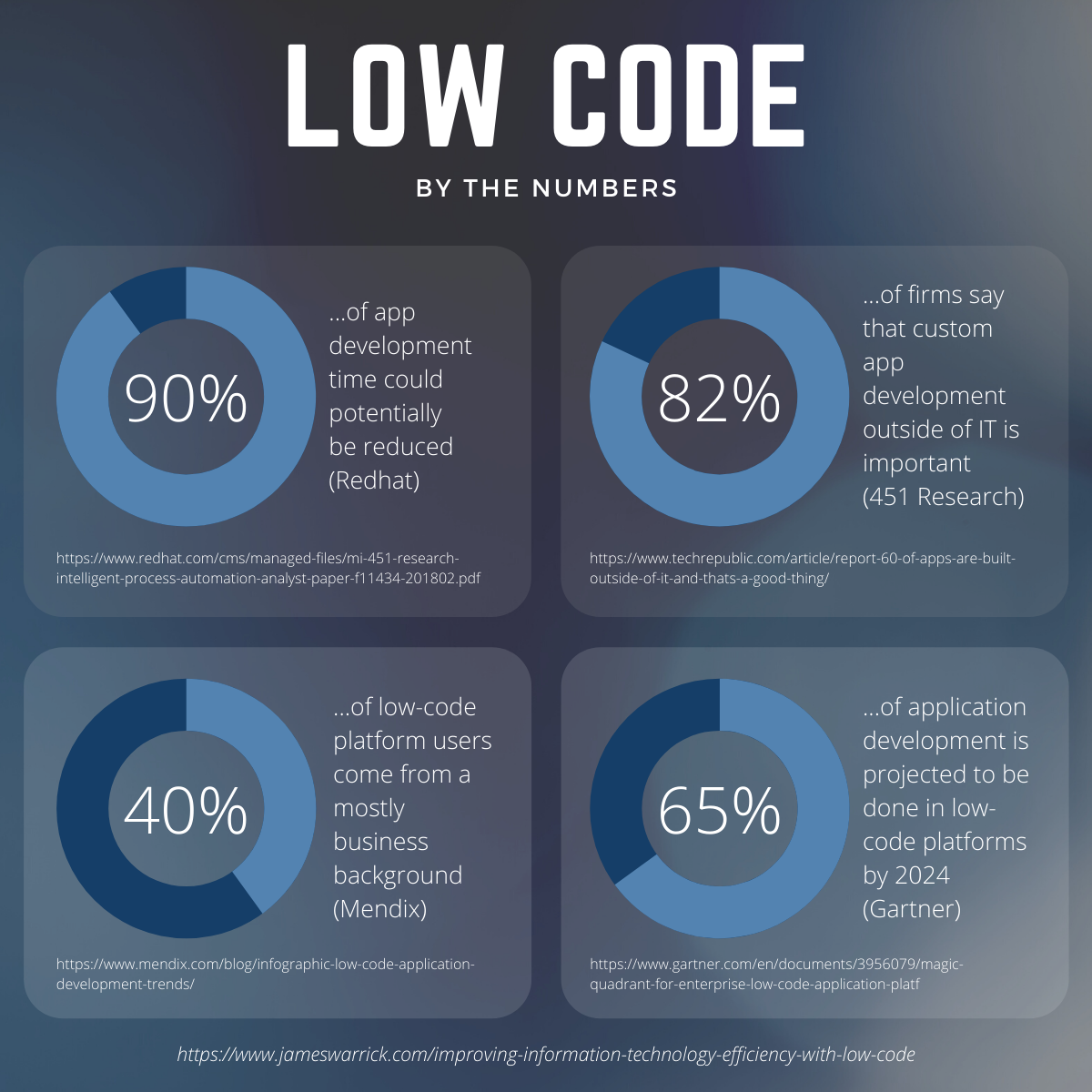Improving information technology efficiency with low-code
One of the most impactful shifts over the last decade in information technology has been the rise of low-code solutions. However, low-code and its potential impact often isn’t fully understood by everyone who could benefit from it.
One of the myths surrounding low-code is that these solutions will replace developers (wrong – but hopefully they help developers avoid lots of the tedious stuff). On the other side of that coin is the myth that these tools are pointless because you still end up needing to write code (yes, you still have to write code – but much less of it).
These myths both completely miss the power of these solutions. Low-code brings the responsibilities and influence of developers and non-developers closer together in the software development process. How?
- Developers write a significant amount of boilerplate like data access, admin applications, stitching APIs together, etc. Low-code solutions can significantly reduce that boilerplate or even allow delegation to a non-developer stakeholder reponsible for the application.
- For non-developers, a supported low-code platform means that many of the types of tasks that were shoehorned into fragile excel sheets and convoluted VBA scripts can be built by non-developers and managed with minimal developer involvement.
Low-code solutions can be a significant multiplier on development resources, and they can also amplify the expertise and domain knowledge of non-developer users who are trying to streamline their day-to-day tasks across their teams and departments.
Want to better understand low-code and the impact it could have on your business? Here are a few resources worth reading:



